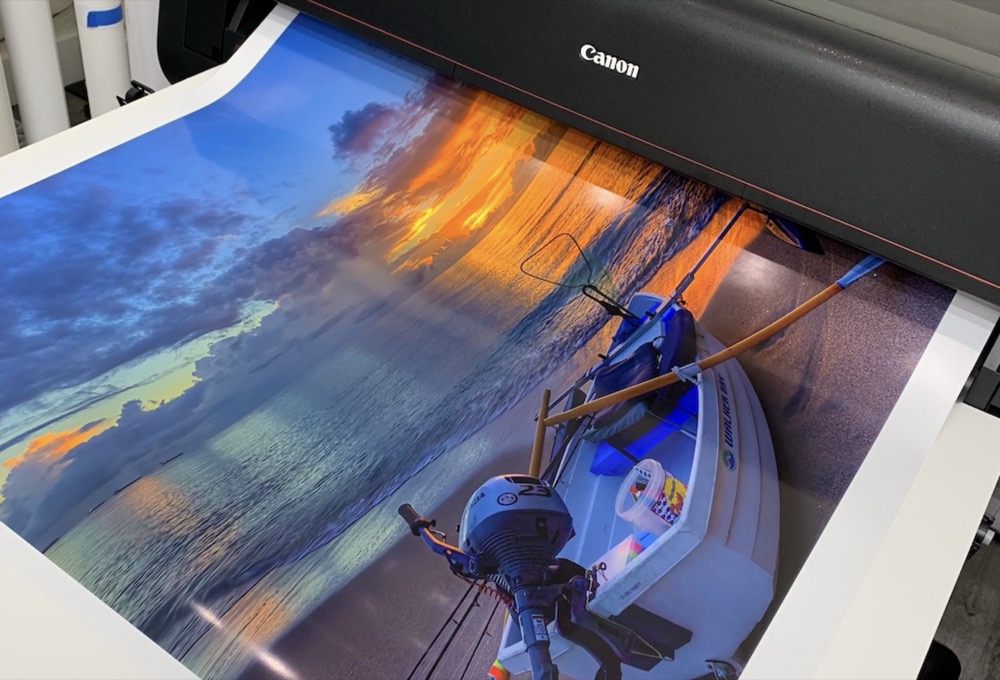How Do I Choose the Right Paper for Fine Art Prints?

Choosing the right paper for fine art prints is crucial for achieving the best possible results. Whether you're an artist, photographer, or business owner in Miami, understanding the different types of paper and their characteristics can help you make an informed decision. In this guide, we'll explore the various factors to consider when selecting paper for your fine art prints.

Importance of Choosing the Right Paper
The paper you choose for your fine art prints can significantly impact the final quality and longevity of your artwork. The right paper can enhance colors, add texture, and make sure that your prints stand the test of time. Conversely, the wrong paper can lead to dull colors, poor detail, and a shorter lifespan for your prints.
Types of Fine Art Paper
Archival Paper
Archival paper is designed to last for decades without deteriorating. It is acid-free and lignin-free, making it an excellent choice for preserving the quality of your prints. Common uses for archival paper include fine art prints, photographs, and important documents.
Cotton Rag Paper
Cotton rag paper is known for its luxurious texture and durability. Made from 100% cotton fibers, this paper is ideal for high-quality fine art prints. Its soft, textured surface adds depth and character to your artwork, making it a popular choice among artists in Miami.
Canvas Paper
Canvas paper offers a unique alternative to traditional canvas. It provides the texture and appearance of canvas while being more affordable and easier to handle. Canvas paper is perfect for artists looking to replicate the look of a canvas painting without the cost and hassle of stretching a canvas.
Watercolor Paper
Watercolor paper is specifically designed to handle the absorbency and texture required for watercolor paintings. Its rough surface allows for excellent color retention and detail, making it a great choice for artists who work with watercolors or other wet media.
Baryta Paper
Baryta paper is known for its glossy finish and exceptional depth. It is often used for black and white photography, as it enhances contrast and detail. Baryta paper is also suitable for color prints, providing a rich, vibrant finish that brings your artwork to life.
| Paper Type | Characteristics | Benefits | Common Uses |
|---|---|---|---|
| Archival Paper | Acid-free, lignin-free | Long-lasting, preserves quality | Fine art prints, photographs, important documents |
| Cotton Rag Paper | Made from 100% cotton fibers, soft, textured surface | Luxurious texture, durable, adds depth and character | High-quality fine art prints |
| Canvas Paper | Texture and appearance of canvas, more affordable | Easy to handle, replicates canvas painting look | Artists replicating canvas paintings |
| Watercolor Paper | Rough surface, high absorbency | Excellent color retention, detailed prints | Watercolor paintings, wet media art |
| Baryta Paper | Glossy finish, exceptional depth | Enhances contrast and detail, vibrant finish | Black and white photography, color prints |
Paper Weight and Thickness
Understanding the weight and thickness of paper is essential for choosing the right type for your fine art prints. Paper weight is measured in GSM (Grams per Square Meter), and it affects the durability and feel of the paper. Thicker paper is generally more durable and provides a more substantial feel, while lighter paper is more flexible and easier to handle.
Paper Texture and Finish
Matte Finish
Matte finish paper has a non-reflective surface that reduces glare and provides a smooth, elegant look. It is ideal for prints that require a soft, subtle appearance, such as portraits and fine art reproductions.
Glossy Finish
Glossy finish paper has a shiny, reflective surface that enhances colors and details. It is perfect for prints that need to stand out, such as photographs and vibrant artwork. However, it can be prone to fingerprints and glare, so it may not be suitable for all applications.
Satin and Semi-Gloss Finish
Satin and semi-gloss finish papers offer a balance between matte and glossy finishes. They provide a slight sheen that enhances colors without the high reflectivity of glossy paper. These finishes are versatile and suitable for a wide range of art styles.
Textured vs. Smooth Paper
Textured paper adds depth and character to your prints, making it ideal for artwork that benefits from a tactile quality. Smooth paper, on the other hand, provides a clean, crisp finish that is perfect for detailed prints and photographs. Choosing between textured and smooth paper depends on the desired look and feel of your artwork.
| Finish Type | Surface Characteristics | Benefits | Ideal Applications |
|---|---|---|---|
| Matte Finish | Non-reflective, smooth | Reduces glare, elegant look | Portraits, fine art reproductions |
| Glossy Finish | Shiny, reflective | Enhances colors and details | Photographs, vibrant artwork |
| Satin and Semi-Gloss Finish | Slight sheen, balanced reflectivity | Enhances colors without high reflectivity | Wide range of art styles |
| Textured Paper | Depth, tactile quality | Adds character to prints | Artwork benefiting from texture |
| Smooth Paper | Clean, crisp finish | Perfect for detailed prints | Detailed prints, photographs |
Color Reproduction and Paper Brightness
Paper brightness affects the vibrancy of colors in your prints. Brighter paper can make colors appear more vivid, while lower brightness levels can create a softer, more muted effect. Optical brightening agents (OBAs) are often used to enhance paper brightness, but they can affect the longevity of your prints. Consider the desired color reproduction and longevity when choosing the brightness level for your paper.
Longevity and Archival Quality
Ensuring the longevity of your fine art prints is essential for preserving their quality over time. Acid-free and lignin-free papers are designed to resist yellowing and deterioration, making them ideal for archival purposes. UV resistance is also important, as it helps protect your prints from fading due to exposure to light.
Compatibility with Printing Techniques
Different printing techniques require different types of paper. For example, inkjet and giclée printing work best with specific papers that can handle the ink and produce high-quality results. Make sure that the paper you choose is compatible with your printing technique to achieve the best possible outcome.
Cost Considerations
Balancing budget with quality is important when choosing paper for fine art prints. While premium paper can be more expensive, it often provides better results and longevity. Consider investing in high-quality paper for important projects, and explore cost-effective alternatives for less critical prints.
Case Studies and Examples
Real-world examples and testimonials from artists and photographers can provide valuable insights into the different types of paper used for fine art prints. Learning from the experiences of others can help you make informed decisions and achieve the best possible results for your artwork.
Choosing the right paper for fine art prints is a crucial step in achieving high-quality results. By considering factors such as paper type, weight, texture, finish, color reproduction, longevity, and environmental impact, you can make an informed decision that enhances the beauty and durability of your prints. Whether you're an artist, photographer, or business owner in Miami, selecting the right paper can elevate your artwork and make sure it stands the test of time.
Artful Printers is dedicated to helping you achieve the best possible results for your fine art prints. Our team of experts is here to guide you through the process and provide personalized solutions. Ready to get started? Contact us today at 305-754-3888 to discuss your project and request a quote. Let us help you bring your creative vision to life with our top-rated printing services in Miami.

.png)






